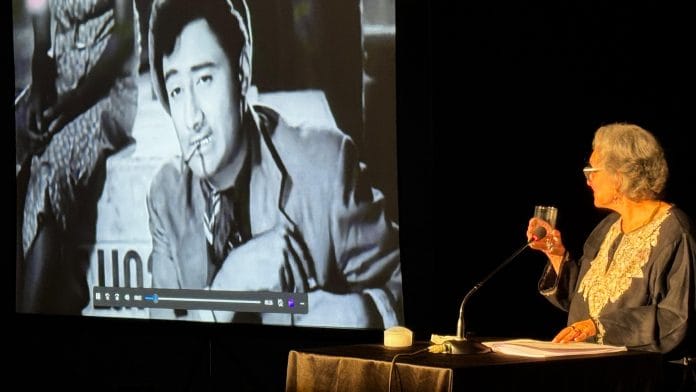New Delhi: Dev Anand will never go out of style. The packed venue at the India Habitat Centre on 13 December for his niece Sohaila Kapur’s audio-visual presentation, Anand Hi Anand, stands as a testament to his enduring legacy.
Fans from all corners of Delhi gathered to discover the many facets of the actor, who was far more than the romantic, evergreen hero remembered by Indian cinema. Sohaila Kapur’s monologue captured some of that magic by exploring the iconic films of the actor and his brothers, Chetan and Vijay, spanning five decades—from Taxi Driver (1954) to Prem Pujari (1970) to Hare Rama Hare Krishna (1971).
Kapur’s most striking revelation was an anecdote: “There was a rumour that Dev was banned from wearing a black shirt because he looked so handsome that women would swoon. He actually did not deny it during his days of being a popular actor, and only wrote about it in his autobiography much later,” she said.
It could have been so much more. Kapur’s engaging reading combined professional highlights with personal anecdotes, but the accompanying visual presentation, which included songs, video clips, and archival footage, did not do justice to Anand’s flamboyance. No actor—then or now—can pull off Dev Anand’s style, his tailored suits, gleaming shoes, and slicked-back hair.
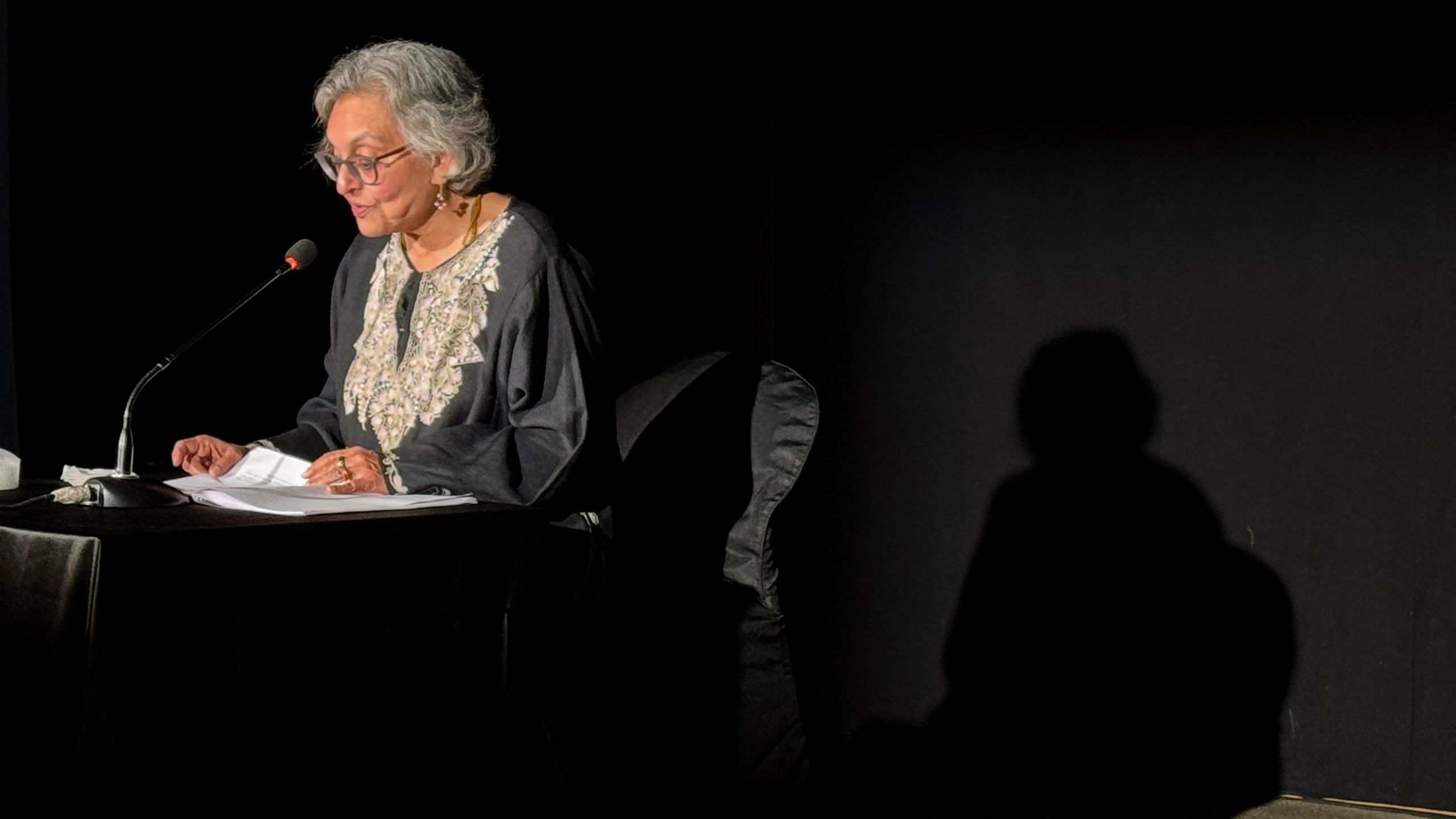
While black-and-white classics like Ziddi (1951) and Baazi (1951) were celebrated, many of his iconic colour films, such as Johny Mera Naam (1970) and Prem Pujari did not receive equal attention. Some audience members, who grew up watching his films, later told ThePrint that the presentation leaned too heavily on the black-and-white era.
Produced by Anuradha Dar of Katyayani & Three Arts Club and written by Kapur, Anand Hi Anand also marked 75 years of Navketan Films, the production house started by Dev Anand and his brothers. The presentation spotlighted Navketan’s films, the risks taken, creative differences, and camaraderie among the brothers.
For instance, Guide (1965) was a gamble. Its bold plot about adultery made financiers wary, and the English version flopped. But the Hindi version became a cult classic. Tere Mere Sapne (1971), on the other hand, was a commercial failure. Similarly, Honthon Mein Aisi Baat was filmed in a single take, with Vyjayanthimala practising to the point of exhaustion.
Also read: Girls threatened to kill me on learning I was Dev Anand’s niece. They said, ‘How dare you?’
Audience nostalgia
The audience was an integral part of the performance. Men and women softly sang along when songs like ‘Acha Ji Main Hari’ from Kala Pani (1958) and ‘Hontho Mein Aisi Baat’ from Jewel Thief (1967) played in the background of Kapur’s narration.
Mahima Bhatia, in her 70s, overcame her difficulty climbing stairs to spend an evening listening about her first ‘crush’.
“I had a cutout of him in my diary. My mother found out but did not say anything because she secretly liked his handsome looks too,” she said, smiling at the memory.
Every once in a while, her eyes strayed to the garlanded photo of the three Anand brothers behind Kapur’s chair.
“We had to scour Google to finally find images of the three together,” Kapur revealed. “Albums did not have them. We found just one. Dev would have images with Chetan or with Vijay, not all three together.”
The brothers had their disagreements, but Vijay, or ‘Goldie,’ acted as a bridge between Dev and Chetan.
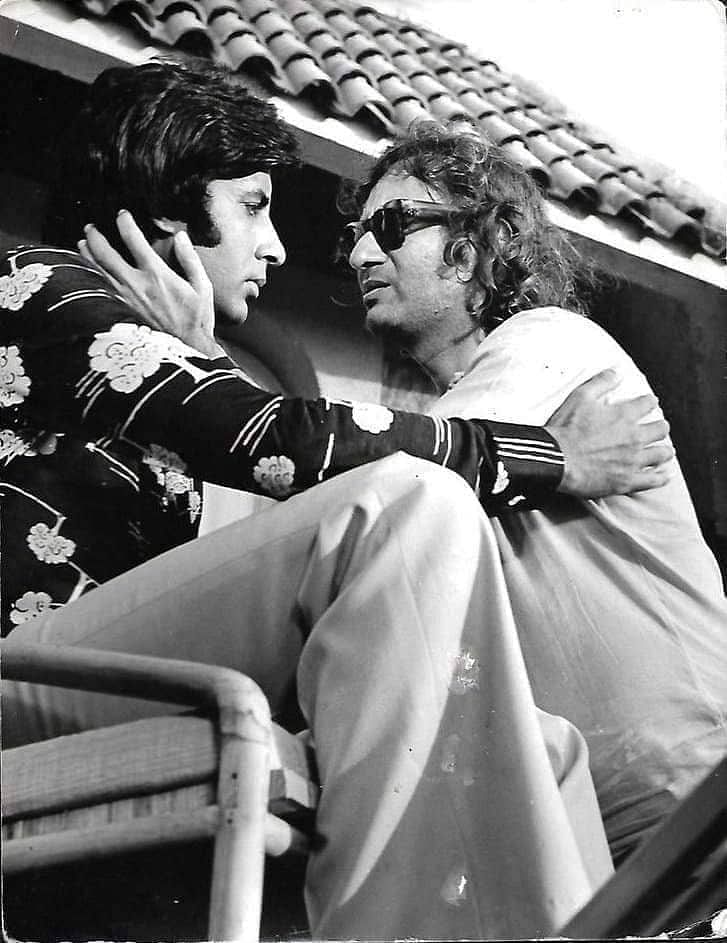
“Chetan would walk off in a huff, but Goldie was a master diplomat,” Kapur said. He also convinced Dev to play the role of Raju in Guide.
The film was groundbreaking, tackling themes of adultery and spiritual redemption. It faced hurdles—music director SD Burman fell ill, lyricist Hasrat Jaipuri quit, and Vyajanthimala’s grandmother wouldn’t let her play the lead in an ‘adulterous’ film. But Dev the producer persisted. Waheeda Rehman replaced Vyajanthimala, and the film opened to a tepid response.
“At the screening for the industry wallahs, no one came to congratulate the brothers. They walked away, perplexed at what they had just seen,” said Kapur.
Guide would eventually earn eight Filmfare Awards, with Rehman also winning the Best Actress award at the Chicago International Film Festival.
Dev Anand’s personal life also captivated fans. “He was often compared to Gregory Peck. But Dev Anand was much better—his smile was killer,” said one audience member after the reading.
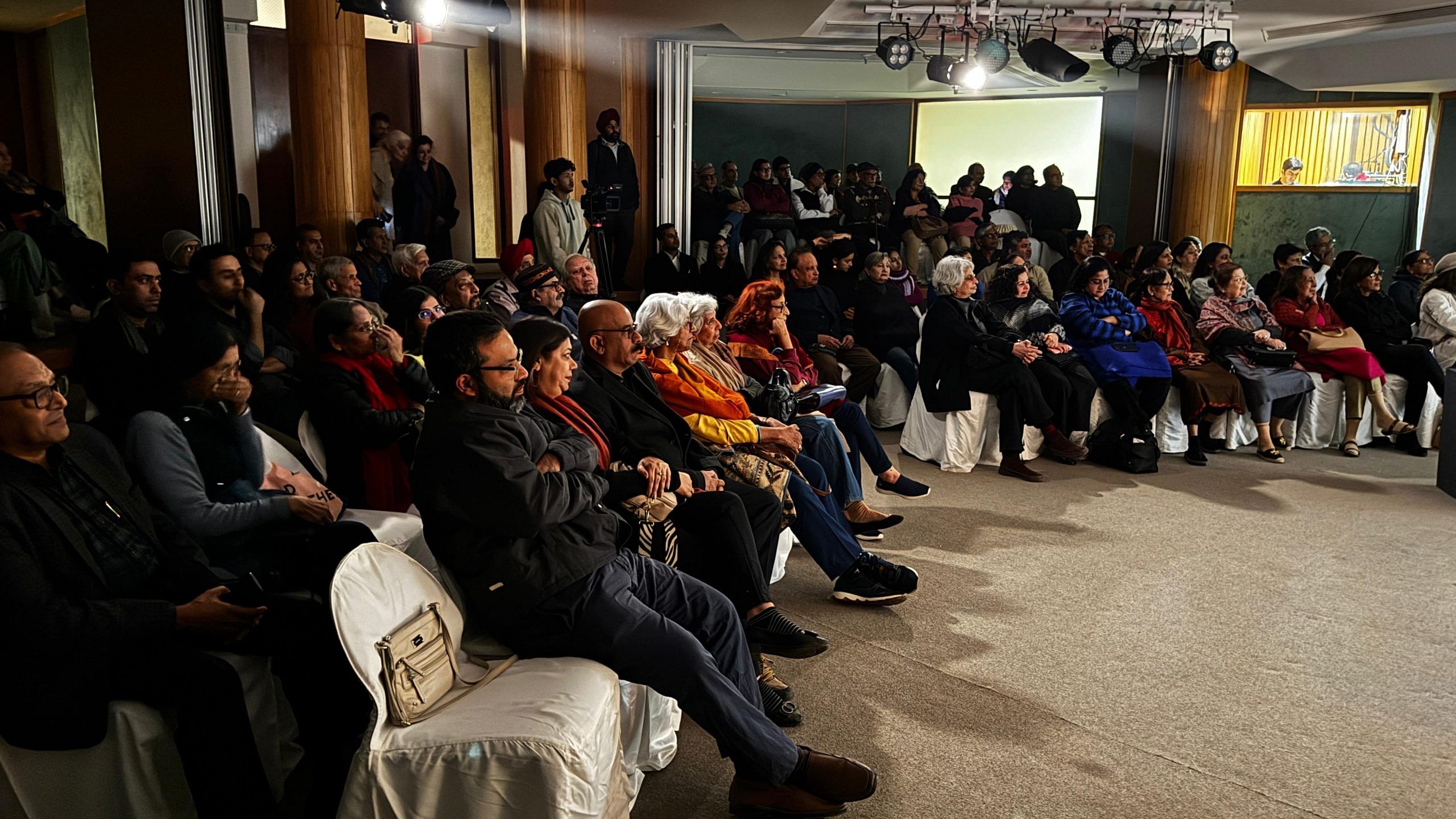
This comparison originated when Suraiya, whom Dev was dating, once said he looked like Peck. And it stuck. They also referred to each other as Nosey and Steve, though their romance didn’t culminate in marriage.
Peck and Anand would meet later, and the Hollywood actor knew he was being compared to the Indian actor.
Anand later married Mona Singha, who adopted the screen name Kalpana Kartik. She starred with him in Taxi Driver, Navketan Films’ first major success.
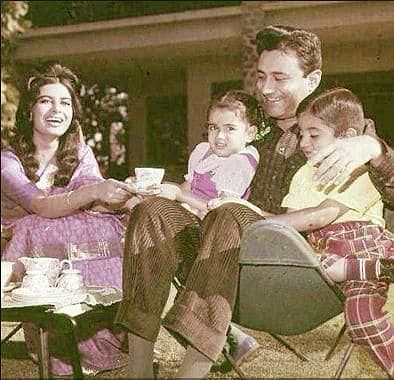
“Mona had agreed to a relationship but had also extricated the promise of marriage. They got married secretly, and only the cinematographer knew, because he spotted the ring on Mona’s finger,” said Kapur.
Also read: ‘Log mujhe pyaar karte hain’ — if Dev Anand was alive at 100, he would still be making films
Political stances and war films
Dev Anand was never afraid to take a stand. Like Kishore Kumar, he was a vocal critic of the Emergency, which affected his career as government broadcasters clamped down on his films.
The Anand brothers were attuned to the socio-political climate in the country, and responded to them. Dev’s anti-war stand was evident in the films Navketan produced—from Hum Dono to Prem Pujari. Chetan also went on to make Haqeeqat (1964) with Dharmendra, under the banner Himalaya Films, considered one of India’s best war films.
The director had dedicated the film to Prime Minister Jawaharlal Nehru and the soldiers in Ladakh.
Hum Dono was a commentary on the loss of lives in war, and the impact of it on the soldiers and their families. It was set against the backdrop of World War II and featured Anand in a double role—an experimental move that would become mainstream by the ’70s.
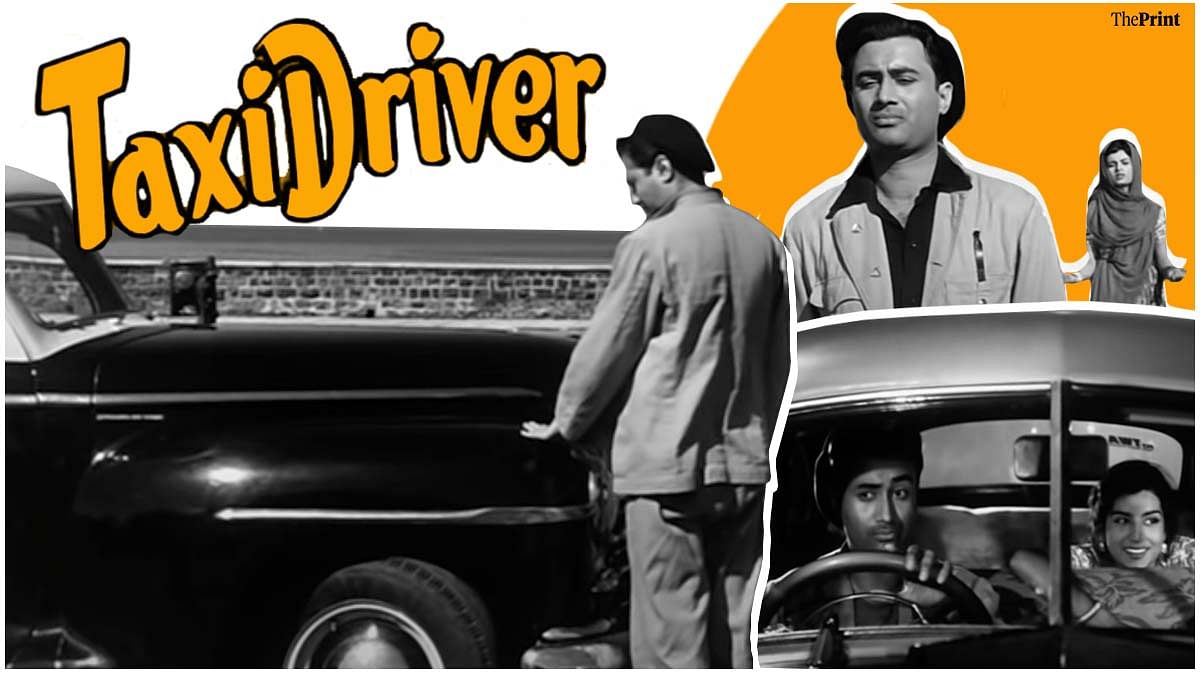
Dev Anand debuted as a director with Prem Pujari. The film about an army man who refuses to fight because of his belief in non-violence was a commercial failure, and even sparked protests in Calcutta over its portrayal of Chinese communists.
“Sadhana told me that Dev did not have a knack for screenplay,” said Kapur. But the actor, who had bounced back multiple times in his career, then delivered Hare Rama Hare Krishna (1971), a box office hit that explored the hippie movement.
“The role of his sister was offered to Mumtaz, but she refused because she was a big star by then and wanted to only act in romantic roles against big heroes. And then he spotted Zeenat Aman, who was a model,” said Kapur.
The times, however, were changing. The rise of fast-paced narratives and Salim-Javed scripts like Zanjeer (1973) had entered the film industry.
“The role was first offered to Anand, but he refused saying that the angry young image did not suit him. Amitabh Bachchan was cast, and the rest was history,” said Kapur.
Yet, neither the shifting industry nor advancing age dimmed Dev’s zest for life and movies.
As the event drew to a close, a fan requested to perform a favourite dialogue. Taking the mic, he recited lines from Tere Ghar Ke Samne (1963): “Chahe asmaan toot pare, chahe dharti phoot jaye, chahe hasti kyun na mit jaye…”.
In that moment, Dev Anand’s magic came alive again.



